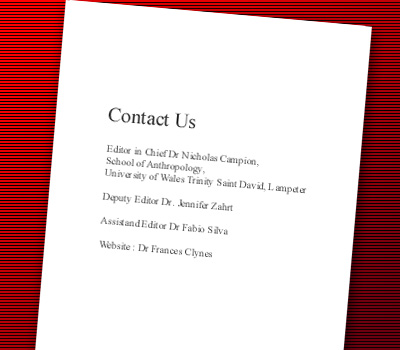We are currently seeking submissions for future volumes of Culture and Cosmos.
Volume 22
Ištar's Journey: Above and Below
Julye Bidmead and Marilyn Love
Abstract
Astral information appears in a wide variety of cuneiform texts: astronomical manuals, omen series, reports written by celestial diviners to the kings, letters, prayers, and myths. This paper examines one of these myths, Inanna/Ištar's Descent into the Netherworld, to trace the parallels between Inanna/Ištar's journey in the netherworld and the planet Venus. The Mesopotamian goddess Inanna/Ištar is represented in her astral aspect as Venus, who is both the evening star, visible after sunset, and the morning star, visible before sunrise. In the myth, she travels from the 'great heavens above' into the netherworld, the 'great below', where she passes through seven gates. At each gate, she is symbolically stripped of her divine radiance (melammu) by the removal of her clothing and adornments. She is held prisoner by the queen of the netherworld, her older sister, Ereškigal. During the goddess' captivity, procreation and fertility of the land cease. She is eventually rescued and released in exchange for her lover, Dumuzi/Tammuz, who must reside half of the year in the netherworld in her place. Though the myth is traditionally understood as a seasonal aetiology, with its familiar ancient Mediterranean dying-rising god motif, and as the Mesopotamians' conception of afterlife, using iconographic representations and linguistic comparisons with the astral omen texts, another interpretation explaining the movements and periodic disappearance of Venus is noticeable.









